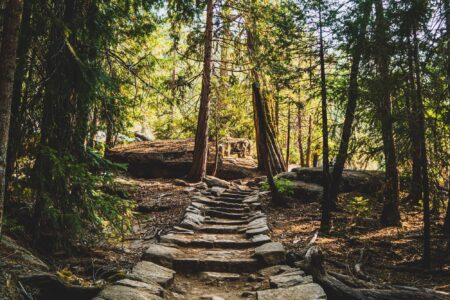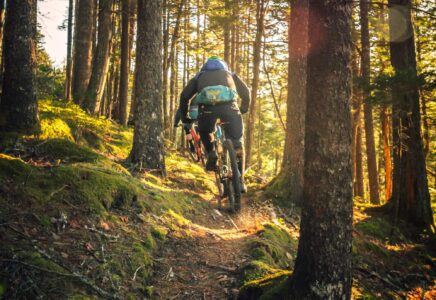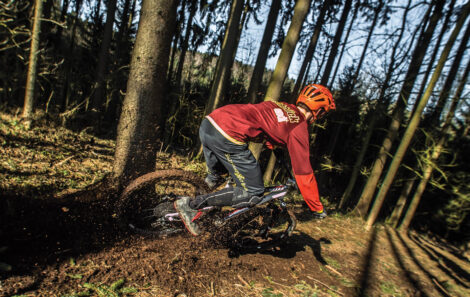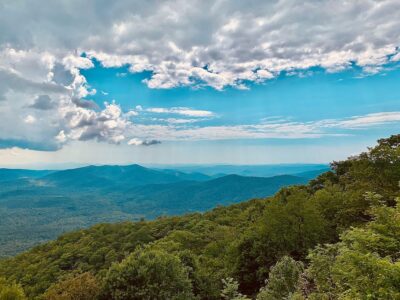Beginner Riding Tips: How to Navigate Twisty, Punchy, and Rough Trails
- Matthew Chisholm
- October 13, 2022
- Education
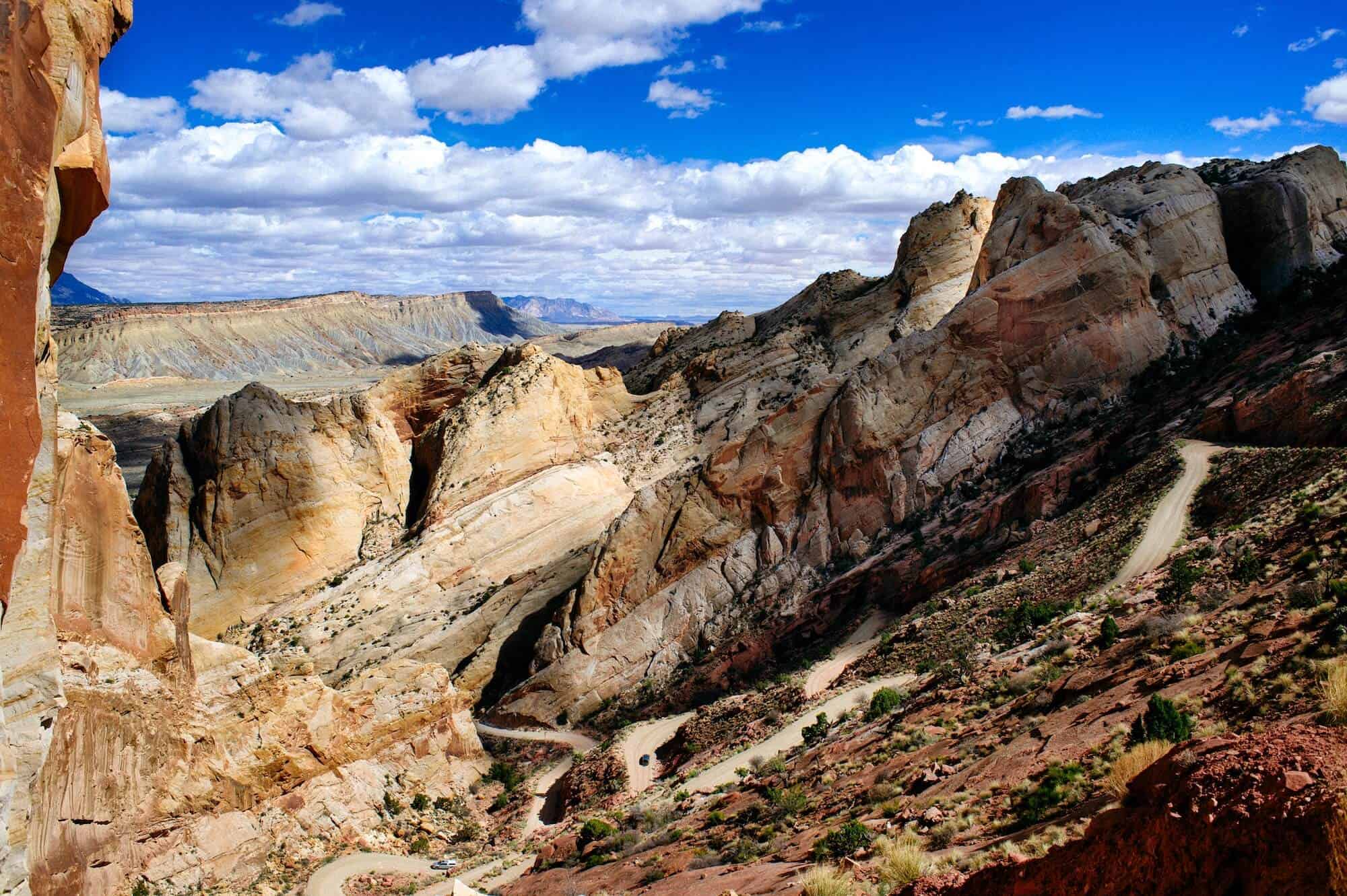
Photo by Donald Giannatti
There is a big difference between riding National Forest Service trails and your local mountain biking park. The former usually offers long sections traversing through unique terrain, rarely doubling back on themselves. Climbs are typically long and sustained, leading to downhill sections that can last miles. Riding local trails, however, poses more challenges since they are usually packed into tiny parcels of land. As a result, riding in these parks can be much more difficult from a handling standpoint, especially for new riders. Sure the mileage and technical features generally are lower, but finding a flow on a neighborhood track requires essential other skills that will make you a better all-around rider.
Smaller mountain biking areas generally have tons of quick, snappy turns. Trail designers usually try to make the most out of a small amount of land, so constant 180-degree hairpins are generally par for the course. If these turns bank, you can easily find yourself flying off the trail into a tree or shrub, damaging yourself and your bike. Navigating a landscape of constant twisting and turning requires agility, trail vision, and flow. As counterintuitive as it may seem, braking and pedaling are the enemies of flowing through any turn. I usually try to navigate downhill hairpins standing up, weight back behind my saddle, and my hands lose on my handlebars. I brake as little as possible coming into the turn and never try to pedal except when exiting.
Twisty trails
On the other hand, climbing through switchbacks differs from flowing through a twisty trail downhill. First, you have to pedal. Second, you aren’t breaking (unless you’ve made a mistake). But the most significant difference is that you need to switch directions quickly at low speeds. Flow through turns going uphill on sharp gradients is very challenging. The best thing to remember is that you want to hold momentum going into the turn while also spinning comfortably enough to maintain balance.
I also try to pick a line on the far outside going into the turn so I have the most real estate to work with on the trail. As I exit the turn, I try to move to the inside to carry momentum and speed out of that section readying myself for upcoming features. You never want to exit a turn slowly if you can help it. I also try to avoid standing up and climbing through the switchback generally. It is sometimes necessary to stand to have a bit of power, but I usually find my loss in balance rarely makes up for more wattage.
Punchy trails
Another unique challenge to small trails is how punchy they are. Downhill sections usually smack into steep uphill gradients, necessitating a quick shift sequence through most of your cassette. Also, trail sections can often go through ditch sections which pose yet another challenge to flow. The critical thing to remember during punchy sections is that you want to remain loose on your bike while holding a slightly easier gear than you may think. As I descend downhill through an area, I shift to an easier gear, getting ready for the inevitable rise. As I enter the hill, I soft pedal until my cadence matches the gradient. You never want to be left spinning wildly on your pedals, so don’t shift to your easiest gear, even if the hill is steep. Instead, catch the incline on a middling gear and go to easier gears as the terrain dictates. This type of riding will enable you to move powerfully and smoothly up the hill in the exact gear you should be in.
Smaller trails
A final challenge that smaller trails pose is their rough character. I generally find these trails to be full of roots and loose rocks. Also, they aren’t always built with water flow, so many sections wash out quickly, creating cratered segments that beat you to bits. If you have a squishy full suspension, you probably don’t have to worry much about the rough terrain. Still, if you want to stay smooth on bouncy terrain, I recommend riding standing up as much as possible. On days I’m more fatigued, I find myself bouncing all over my saddle and, therefore, the trail if I try to ride sitting down. Instead, I found a comfortable but somewhat aggressive position on the bike and let the bike and my legs absorb much of the impact from the rough sections.
Riding twisty, punchy, and rough trail sections are rarely about speed
Instead, I try to focus on flow and keeping my body in check as I move through the terrain. Sure, riding the more spread out and bigger trails in the mountains or larger public lands may be more fun. But those areas aren’t close to me, and I don’t want to reserve my riding when I have time off. Riding the smaller parks can sometimes be grueling. Still, excellent training translates into better riding on all terrain, especially those “bucket list” trails reserved for more extensive trips on weekends and holidays.
Matthew Chisholm
Matt Chisholm is a data analyst and freelance writer who studies the environmental history of the Southern Smoky Mountain region of North Carolina. He was a contributor to Lost in Transition: Removing, Resettling, and Renewing Appalachia and the 2016 edition of the Journal of East Tennessee History, for which he won the 2017 McClung Award. When not writing, Matt enjoys road and mountain biking, hiking, trail running, and drinking beer around Concord, NC where he lives with his wife, daughter, and twin boys.
Get the email for busy mountain bikers.
Discover the best products + gear, and learn about deals from brands you love.
